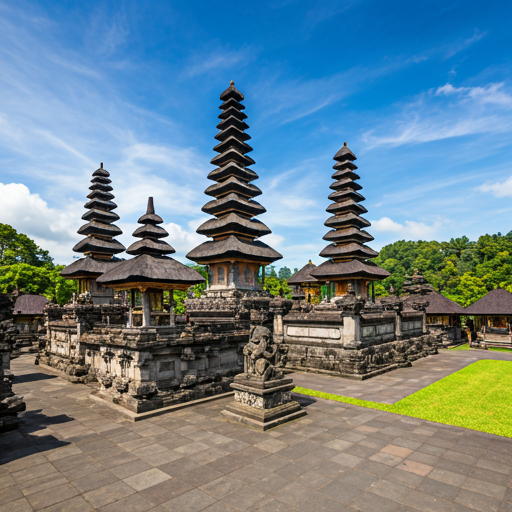The spiritual landscape of Bali is shaped by a multitude of sacred sites that have defined the island’s cultural and religious life for centuries. The Balinese Sacred Sites are not only architectural masterpieces but also vibrant centers of faith and tradition.
Central Role in Balinese Culture
In Balinese culture, the Balinese Sacred Sites play a pivotal role in maintaining harmony among humans, nature, and the divine. These sacred places are deeply rooted in the island’s history and reflect the complex relationship of the Balinese people with their spiritual environment.
Significance Beyond Religion
The importance of the Balinese Sacred Sites extends far beyond their religious function. They are also significant cultural landmarks, showcasing the artistic excellence and architectural prowess of Balinese craftsmen over generations.
What Are Balinese Sacred Sites?
The sacred sites of Bali encompass various types of religious structures and natural locations:
- Temple complexes (Pura)
- Sacred mountains
- Water palaces
- Cave temples
- Holy springs
- Ceremonial gardens
History of the Balinese Sacred Sites
The origins of the sacred sites in Bali date back to the 8th century. The fusion of Hindu, Buddhist, and animist elements has led to a unique sacred architecture.
Who Maintains the Sacred Sites?
The responsibility for maintaining and preserving the temples lies with:
- Local communities
- Traditional priests
- Temple guardians
- Artists and craftsmen
- Volunteer helpers
When Do Major Ceremonies Take Place?
The Balinese calendar dictates the timing for:
- Daily offerings
- Monthly ceremonies
- Annual temple festivals
- Major purification rituals
- Special holidays
Where Are the Most Important Sacred Sites?
The most significant temples are spread across the island:
- Besakih Temple on Mount Agung
- Tanah Lot on the coast
- Uluwatu in the south
- Tirta Empul in central Bali
- Ulun Danu Beratan at Lake Beratan
Why Are They So Significant?
The significance of the sacred sites is based on several factors:
- Spiritual importance
- Historical value
- Cultural heritage
- Architectural beauty
- Social function
- Traditional teachings
How Are the Sacred Sites Used?
Their usage encompasses various aspects:
- Religious ceremonies
- Meditation and prayer
- Cultural events
- Traditional festivals
- Community gatherings
Rules of Conduct and Respect
Visitors should adhere to the following rules:
- Wear appropriate clothing
- Use a sarong and sash
- Maintain a respectful distance
- Avoid entering sacred areas
- Take photos only with permission
Architectural Features
Temple architecture follows strict guidelines:
- Triple-layered divisions
- Symbolic ornaments
- Traditional materials
- Harmonious proportions
- Alignment with cosmic principles
Cultural Relevance Today
In modern times, the sacred sites serve multiple purposes:
- Preserving tradition
- Tourist attractions
- Markers of cultural identity
- Spiritual centers
- Educational venues
Challenges and Protection
Current challenges include:
- Mass tourism
- Environmental impact
- Maintenance costs
- Generational transitions
- Pressure from modernization
The sacred sites of Bali are living testimonies to an ancient culture. The Balinese Sacred Sites remain vital spiritual and cultural centers even today, deserving protection and preservation for future generations.






